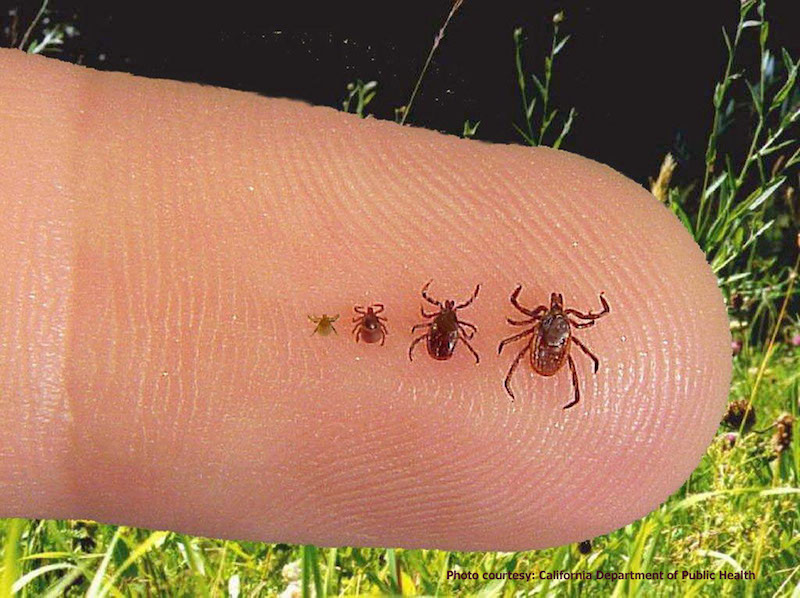
(L-R) The blacklegged tick larva, nymph, adult female and adult male. // Photo: California Department of Public Health
Protect yourself from tick bites, U of M expert says
Compared to other pathogens, Powassan virus is very rare in Canada
The Canadian Press recently reported on a sudden increase of Powassan infections, a rare but virulent virus transmitted by blacklegged ticks, but a U of M entomologist doesn’t want people to focus on this aspect of the story.
The virus gets its name from Powassan, Ont., where it was discovered in 1958, and since then only 16 human cases have been reported in Canada. The recent concern stems from the spike in cases being reported in some states: Minnesota, for instance, has reported 20 cases between 2004-2013. Overall in the US, about 60 cases have been reported in the last 10 years.
The Canadian Press notes that ticks carrying the Powassan virus, which causes swelling of the brain, have been found in New Brunswick, Nova Scotia, Prince Edward Island, Quebec, Ontario, Alberta and British Columbia.
Why hasn’t it been detected in Manitoba?
“My first answer is because nobody is looking for it,” says Kateryn Rochon, an assistant professor in the department of entomology and tick expert at the University of Manitoba. “I have been trying to but I haven’t received funding for it yet.”
Rochon is assisting the Manitoba government with its Blacklegged Tick and Lyme Disease Surveillance Program. She hopes to begin studying Powassan and other tick-borne pathogens in Manitoba soon.
“There is no reason why it’s not here. It just hasn’t been a priority to look for it. It is really quite rare. There has been a spike in Minnesota and Wisconsin and other parts of the US over the last few years, but we have a lower population and fewer ticks for the moment. But it’s definitely something that’s on the radar like the other tick-borne diseases.”
Rochon says that although Powassan is the most virulent tick-borne pathogen, it’s by far the most rare. Researchers are slowly beginning to study it more, but for now it’s more important to focus on the prevalent ones, like Lyme disease and human anaplasmosis.
“If I have one take-home safety message,” Rochon says, “it’s that people shouldn’t be worried about the individual pathogens per say. It’s not the Powassan virus you should worry about. You should worry about how to avoid ticks and protect yourself from bites. By doing this you’re protecting yourself from all tick-borne diseases: You only get these diseases by getting tick bites. So if you protect yourself from ticks, you’re protecting yourself from these pathogens, rare or not. That’s the key thing.”
If bitten by a tick, the Public Health Agency Of Canada advises you to remove it (watch video below for how to do this) and place it in an airtight bag or pill bottle – you may need to show the tick to a doctor or researcher. Then, note the location and date of the bite, watch for symptoms and seek health care immediately should symptoms appear.






